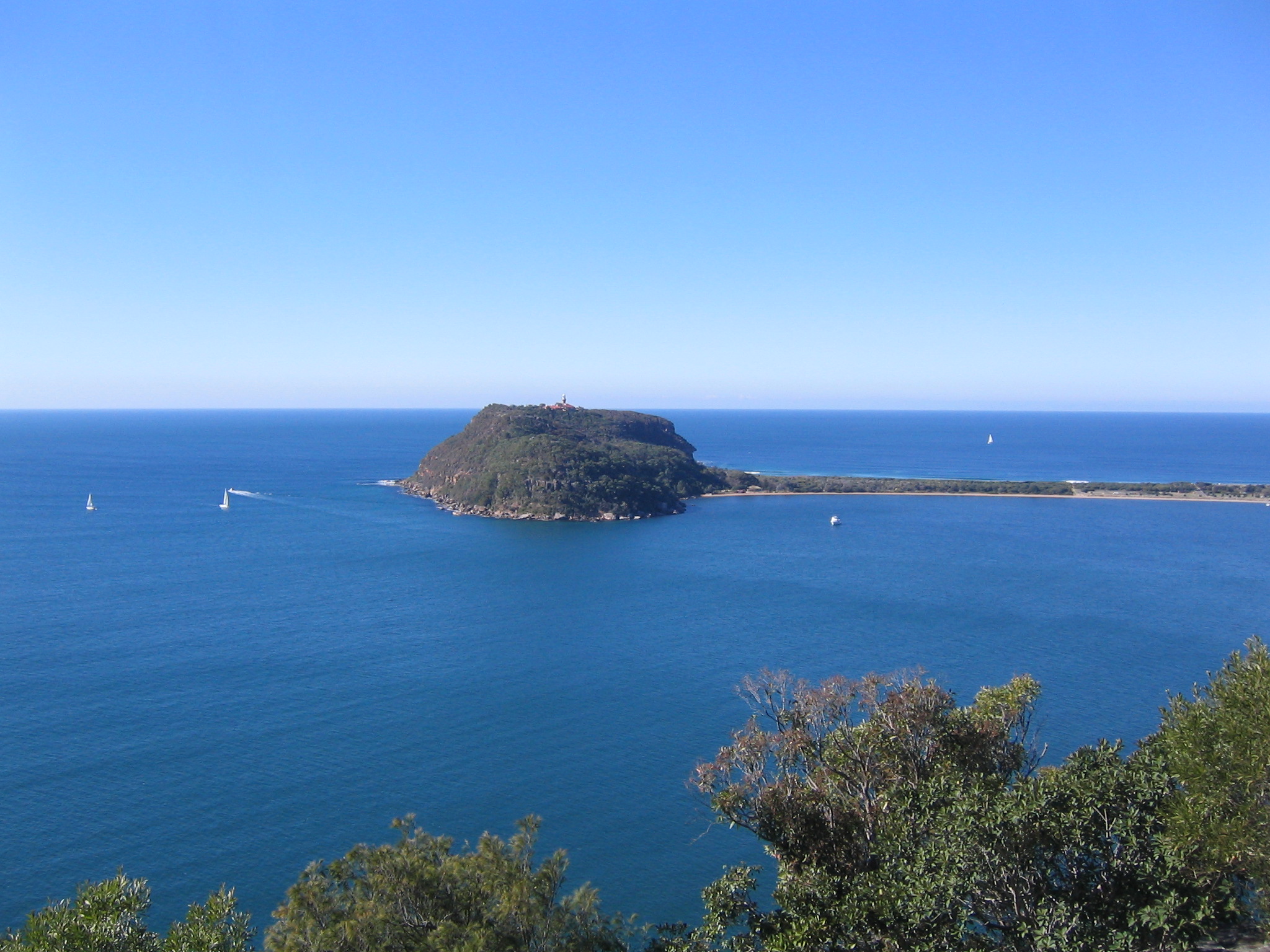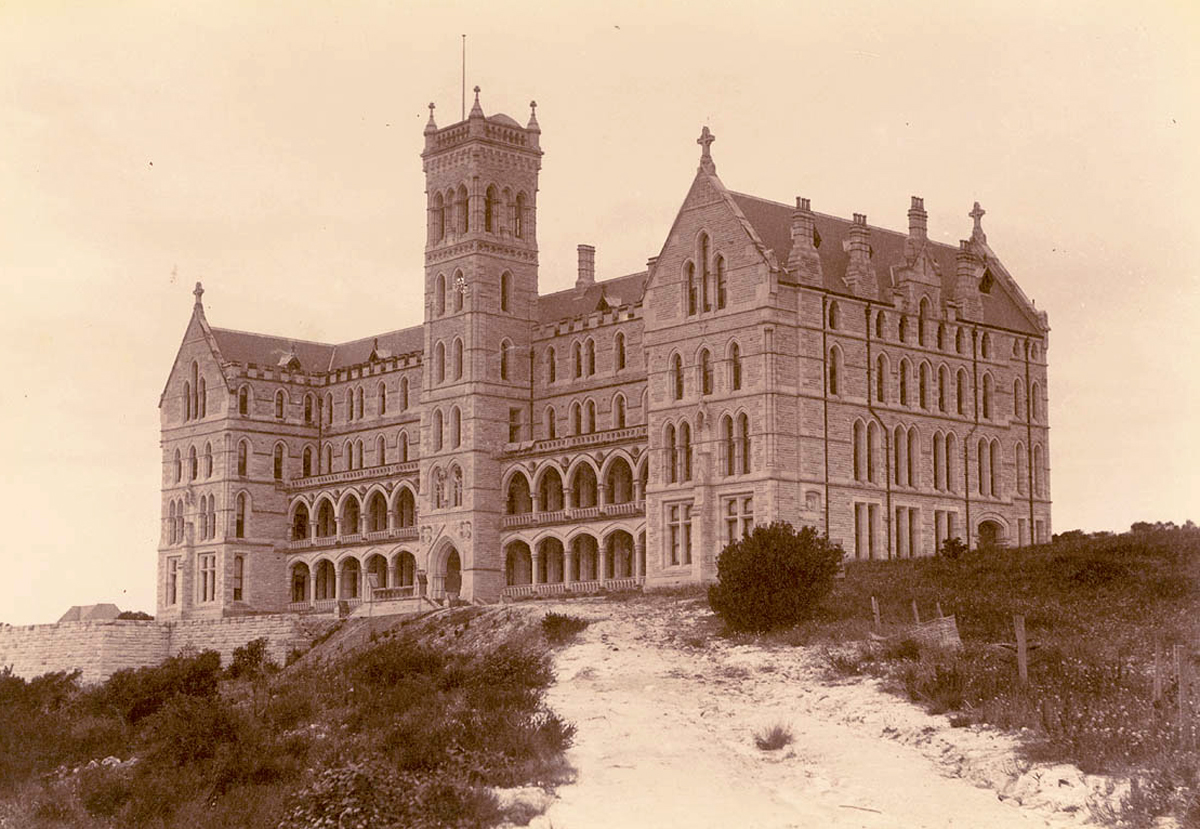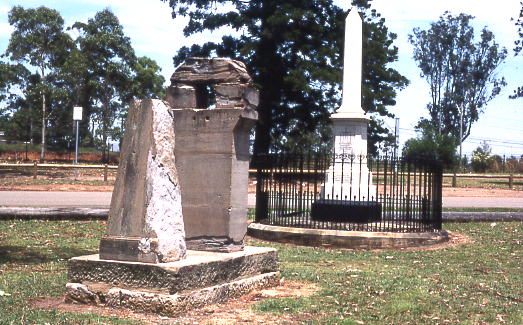|
Roman Catholic Diocese Of Broken Bay
The Roman Catholic Diocese of Broken Bay is a suffragan Latin Rite diocese of the Archdiocese of Sydney, covering the North Shore and Northern Beaches of greater metropolitan Sydney, and the Broken Bay and Central Coast regions of New South Wales, Australia. On 20 November 2014 Bishop Peter Comensoli was appointed as the third bishop of the diocese. He was enthroned on 12 December 2014. Bishop Comensoli was elevated to the position of Archbishop of Melbourne in June 2018 and was replaced by Bishop Anthony Randazzo as the fourth bishop of the diocese in November 2019. History The Diocese of Broken Bay was erected on 8 April 1986. Prior to this date, the area was considered within the jurisdiction of the Archdiocese of Sydney. According to Roman Catholic Church records, in 1822 Governor Brisbane granted land near Pittwater to Father Therry for the purposes of establishing a church. However, attempts to established a church in 1859 were postponed due to the sparcity of Cath ... [...More Info...] [...Related Items...] OR: [Wikipedia] [Google] [Baidu] |
North Shore (Sydney)
The North Shore is a region within Northern Sydney, in the state of New South Wales, Australia, generally referring to suburbs located on the northern side of Sydney Harbour up to Wahroonga, and suburbs between Middle Harbour and the Lane Cove River. The term "North Shore", used to describe this region of Sydney is customary, not legal or administrative, and is often subjective. History The region now referred to as the North Shore was home to a number a clans of the Eora. These included the Cammeraygal people whose traditional lands were located within what are now the Lower North Shore local government areas of North Sydney, Willoughby, Mosman, Manly and Warringah local government areas. The Cammeraygal people lived in the area until the 1820s and are recorded as being in the northern parts of the Sydney region for approximately 5,800 years. The Lower North Shore suburb of Cammeray takes its name from the clan, although the Cameragal clan was centred around, Ka ... [...More Info...] [...Related Items...] OR: [Wikipedia] [Google] [Baidu] |
Australia
Australia, officially the Commonwealth of Australia, is a Sovereign state, sovereign country comprising the mainland of the Australia (continent), Australian continent, the island of Tasmania, and numerous List of islands of Australia, smaller islands. With an area of , Australia is the largest country by area in Oceania and the world's List of countries and dependencies by area, sixth-largest country. Australia is the oldest, flattest, and driest inhabited continent, with the least fertile soils. It is a Megadiverse countries, megadiverse country, and its size gives it a wide variety of landscapes and climates, with Deserts of Australia, deserts in the centre, tropical Forests of Australia, rainforests in the north-east, and List of mountains in Australia, mountain ranges in the south-east. The ancestors of Aboriginal Australians began arriving from south east Asia approximately Early human migrations#Nearby Oceania, 65,000 years ago, during the Last Glacial Period, last i ... [...More Info...] [...Related Items...] OR: [Wikipedia] [Google] [Baidu] |
Barrenjoey, New South Wales
Barrenjoey is a locality in the suburb of Palm Beach, at the most northern tip of Pittwater. The headland is made up primarily of sandstones of the Newport Formation, the top third is a cap of Hawkesbury sandstone. Around 10,000 years ago the headland was cut off from the mainland due to the rising sea level; subsequent buildup of a sand spit or tombolo reconnected the island to the mainland (a 'tied island'). It is the location of the Barrenjoey Head Lighthouse, a lighthouse that was first lit in 1881. In 1995 Barrenjoey was gazetted into Ku-ring-gai Chase National Park. History On 2 March 1788, Arthur Phillip named the headland "Barrenjuee" (meaning little kangaroo or wallaby). The name changed its spelling over time, Barrenjoey now being the accepted name since 1966. Since the 1980s it has been featured heavily in the soap opera '' Home and Away'', during both the credits and the show itself. Ecological communities Mapping by the NSW Office of Environment and Herita ... [...More Info...] [...Related Items...] OR: [Wikipedia] [Google] [Baidu] |
St Patrick's College, Manly
St Patrick's Seminary, Manly is a heritage-listed former residence of the Archbishop of Sydney and Roman Catholic Church seminary at 151 Darley Road, Manly, Northern Beaches Council, New South Wales, Australia. The property was also known as St Patrick's Estate , St. Patricks Estate, St. Patrick's Seminary or College, Cardinal's Palace, Archbishop's Residence, St Pats, St Patricks and Saint Paul's Catholic College. It was designed by Sheerin & Hennessy, Hennessy & Hennessy, Scott Green & Scott and Sydney G Hirst & Kennedy and built from 1885 to 1889 by William Farley (Residence/Palace), W. H. Jennings (College/Seminary). The property is owned by the Catholic Archdiocese of Sydney. The property was added to the New South Wales State Heritage Register on 21 January 2011. The seminary operated from 1889 until its relocation in 1995 to Strathfield where the teaching institute has become distinct from the seminary. The Catholic Institute of Sydney is now the ecclesiastical theol ... [...More Info...] [...Related Items...] OR: [Wikipedia] [Google] [Baidu] |
Pymble, New South Wales
Pymble is a suburb on the Upper North Shore of Sydney in the state of New South Wales, Australia. Pymble is north of the Sydney Central Business District in the local government area of Ku-ring-gai Council. West Pymble is a separate suburb to the south west of Pymble, adjacent to the Lane Cove National Park. Pymble is notable for its gardens, bush reserves and heritage-listed residences and properties of architectural significance, such as the Eric Pratten House. History Based on settlers' accounts, the land that came to be known as Pymble was traversed by, and at least periodically inhabited by, the Cammeraigal clan or tribe of the Kuringai (also known as Guringai) Aboriginal people. The Cammeraigal had occupied the land between the Lane Cove River, Hawkesbury and east to the coast. They would travel from grounds at Cowan Creek to the Parramatta River via Pymble - passing west through the land where Pymble Ladies' College now stands, through the Lane Cove Valley and N ... [...More Info...] [...Related Items...] OR: [Wikipedia] [Google] [Baidu] |
Gosford, New South Wales
Gosford is the city and administrative centre of the Central Coast Council local government area in the heart of the Central Coast region, about north of Sydney and about south of Newcastle. The city centre is situated at the northern extremity of Brisbane Water, an extensive northern branch of the Hawkesbury River estuary and Broken Bay. The suburb is the administrative centre and Central Business District of the Central Coast region, which is the third largest urban area in New South Wales after Sydney and Newcastle. Following its formation from the combination of the previous Gosford City Council and Wyong Shire Councils, Gosford has been earmarked as a vital CBD spine under the NSW Metropolitan Strategy. The population of the Gosford area was 169,053 in 2016. History Until white settlement, the area around Gosford was inhabited by the Guringai peoples, who were principally coastal-dwellers, and the Darkinjung people that inhabited the hinterland. Along with the other ... [...More Info...] [...Related Items...] OR: [Wikipedia] [Google] [Baidu] |
Parish (Catholic Church)
In the Catholic Church, a parish ( la, parochia) is a stable community of the faithful within a particular church, whose pastoral care has been entrusted to a parish priest (Latin: ''parochus''), under the authority of the diocesan bishop. It is the lowest ecclesiastical subdivision in the Catholic episcopal polity, and the primary constituent unit of a diocese or eparchy. Parishes are extant in both the Latin and Eastern Catholic Churches. In the 1983 Code of Canon Law, parishes are constituted under cc. 515–552, entitled "Parishes, Pastors, and Parochial Vicars." Types Most parishes are ''territorial parishes'', which comprise all the Christian faithful living within a defined geographic area. Some parishes may be joined with others in a deanery or ''vicariate forane'' and overseen by a ''vicar forane'', also known as a ''dean'' or ''archpriest''. Per canon 518, a bishop may also erect non-territorial parishes, or ''personal parishes'', within his see. Personal parishes ar ... [...More Info...] [...Related Items...] OR: [Wikipedia] [Google] [Baidu] |
Careel Bay, New South Wales
Careel Bay (formerly 'Evening Bay') is a bay and adjacent locality in Sydney, New South Wales, Australia. The locality is within the suburb of Avalon Beach. The bay lies adjacent to the suburbs of Avalon Beach and Palm Beach in the north east of Pittwater. Environment The bay has the largest stand of mangroves and sea grass beds in Pittwater. The Bay is also a fish nursery important to Pittwater and nearby coastal waters. A total of 116 bird species have been recorded at Careel Bay and its immediate catchment. The endangered Bush Stone-Curlew is a resident of Careel Bay, along with the regionally significant Mangrove Gerygone and international migratory species such as the Eastern Curlew, Whimbrel and Bar-tailed Godwit. Some of these birds, from East-Asia, use Careel Bay as a stop off area. The Federal Government and Australian people are committed to a number of agreements to protect these birds and their habitat, including the China-Australia Migratory Bird Agreement an ... [...More Info...] [...Related Items...] OR: [Wikipedia] [Google] [Baidu] |
Manly, New South Wales
Manly is a beach-side suburb of northern Sydney, in the state of New South Wales, Australia. It is north-east of the Sydney central business district and is currently one of the three administrative centres of the local government area of Northern Beaches Council. Manly has a long-standing reputation as a tourist destination, owing to its attractive setting on the Pacific Ocean and easy accessibility by ferry. History Manly was named by Captain Arthur Phillip for the Indigenous people living there, stating that "their confidence and manly behaviour made me give the name of Manly Cove to this place". These men were of the Kay-ye-my clan (of the Dharug-speaking Gayemaygal people). While scouting for fresh water in the area, Phillip encountered members of the clan, and after a misunderstanding he was speared in the shoulder by one of the clan as a punishment ritual; the progressively-minded Phillip ordered his men not to retaliate. In Capt. Tench's words, The Aboriginal ... [...More Info...] [...Related Items...] OR: [Wikipedia] [Google] [Baidu] |
John Joseph Therry
John Therry (1790 - 25 May 1864) was an Irish Roman Catholic priest in Sydney, Australia. Early life John Therry was born in Cork and was privately educated at St Patrick's College in Carlow. In 1815 he was ordained as a priest. He did parish work in Dublin and later on was secretary to the Bishop of Cork. He had heard that Catholic convicts in Australia were without a priest to minister to them, and let it be known that he would be willing to go there as a missionary. On 5 December 1819 he sailed on the '' Janus'' with another priest, the Rev. P. Conolly, as a companion. They arrived at Sydney on 3 May 1820. Unlike Father O'Flynn, who had previously arrived without government sanction and had been deported, the two priests were accredited chaplains with a salary from the government of £1000 a year each. The two men were of different temperaments and found it difficult to agree, and in 1821 Conolly went to Tasmania and remained there until his death in 1839. St Mary's Cath ... [...More Info...] [...Related Items...] OR: [Wikipedia] [Google] [Baidu] |
Pittwater
Pittwater is a semi-mature tide dominated drowned valley estuary, located about north of the Sydney central business district, New South Wales, Australia; being one of the bodies of water that separate greater Metropolitan Sydney from the Central Coast. Pittwater has its origin from the confluence of McCarrs Creek, to the west of Church Point and a number of smaller estuaries, the largest of which is Cahill Creek, that joins the Pittwater north of Mona Vale. The Pittwater is an open body of water, often considered a bay or harbour, that flows north towards its mouth into Broken Bay, between West Head and Barrenjoey Head, less than from the Tasman Sea. The total area of the Pittwater is and around ninety percent of the area is generally administered by the Hawkesbury–Nepean Catchment Management Authority, in conjunction with Northern Beaches Council. The land adjacent to the Pittwater was occupied for many thousands of years by the Kuringgai peoples, an Aborigina ... [...More Info...] [...Related Items...] OR: [Wikipedia] [Google] [Baidu] |
Thomas Brisbane
Major General Sir Thomas Makdougall Brisbane, 1st Baronet, (23 July 1773 – 27 January 1860), was a British Army officer, administrator, and astronomer. Upon the recommendation of the Duke of Wellington, with whom he had served, he was appointed governor of New South Wales from 1821 to 1825. A keen astronomer, he built the colony's second observatory and encouraged scientific and agricultural training. Rivals besmirched his reputation and the British Secretary of State for the Colonies, Lord Bathurst, recalled Brisbane and his colonial secretary Frederick Goulburn. Brisbane, a new convict settlement, was named in his honour and is now the 3rd largest city in Australia. Early life Brisbane was born at Brisbane House in Noddsdale, near Largs in Ayrshire, Scotland, the son of Sir Thomas Brisbane and his wife Eleanora (née Bruce). He was educated in astronomy and mathematics at the University of Edinburgh. He joined the British Army's 38th (1st Staffordshire) Regiment of Foot ... [...More Info...] [...Related Items...] OR: [Wikipedia] [Google] [Baidu] |






